#yurok land
Explore tagged Tumblr posts
Text
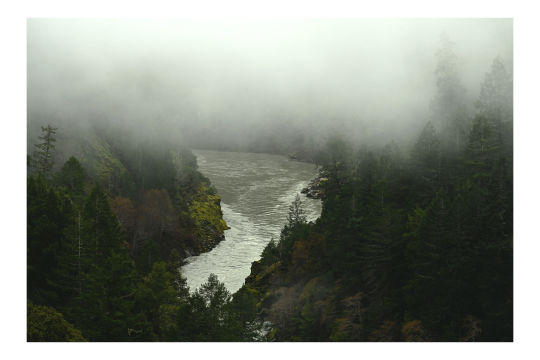


Trinity River along highway 96, before it's meeting with the Klamath
Weitchepec, California
#trinity river#klamath river#waters#yurok land#douglas fir#tanoak#coast live oak#bigleaf maple#west coast#forest#rainy day#fog#mist#mountains#landscape#naturecore#humboldt county#pacific northwest#pnw vibes#pnwonderland#landscape photography#pnw photography#nature photography#original photographers#nikon
110 notes
·
View notes
Text
"The Yurok will be the first Tribal nation to co-manage land with the National Park Service under a historic memorandum of understanding signed on Tuesday [March 19, 2024] by the tribe, Redwood national and state parks, and the non-profit Save the Redwoods League, according to news reports.
The Yurok tribe has seen a wave of successes in recent years, successfully campaigning for the removal of a series of dams on the Klamath River, where salmon once ran up to their territory, and with the signing of a new memorandum of understanding, the Yurok are set to reclaim more of what was theirs.
Save the Redwoods League bought a property containing these remarkable trees in 2013, and began working with the tribe to restore it, planting 50,000 native plants in the process. The location was within lands the Yurok once owned but were taken during the Gold Rush period.
Centuries passed, and by the time it was purchased it had been used as a lumber operation for 50 years, and the nearby Prairie Creek where the Yurok once harvested salmon had been buried.
Currently located on the fringe of Redwoods National and State Parks which receive over 1 million visitors every year and is a UNESCO Natural Heritage Site, the property has been renamed ‘O Rew, a Yurok word for the area.
“Today we acknowledge and celebrate the opportunity to return Indigenous guardianship to ‘O Rew and reimagine how millions of visitors from around the world experience the redwoods,” said Sam Hodder, president and CEO of Save the Redwoods League.
Having restored Prarie Creek and filled it with chinook and coho salmon, red-legged frogs, northwestern salamanders, waterfowl, and other species, the tribe has said they will build a traditional village site to showcase their culture, including redwood-plank huts, a sweat house, and a museum to contain many of the tribal artifacts they’ve recovered from museum collections.
Believing the giant trees sacred, they only use fallen trees to build their lodges.
“As the original stewards of this land, we look forward to working together with the Redwood national and state parks to manage it,” said Rosie Clayburn, the tribe’s cultural resources director.
It will add an additional mile of trails to the park system, and connect them with popular redwood groves as well as new interactive exhibits.
“This is a first-of-its-kind arrangement, where Tribal land is co-stewarded with a national park as its gateway to millions of visitors. This action will deepen the relationship between Tribes and the National Park Service,” said Redwoods National Park Superintendent Steve Mietz, adding that it would “heal the land while healing the relationships among all the people who inhabit this magnificent forest.”"
-via Good News Network, March 25, 2024
#indigenous#land back#indigenous issues#first nations#native american#indigenous peoples#yurok#yurok tribe#national parks service#national park#redwoods#california#trees#trees and forests#united states#good news#hope#indigenous land
5K notes
·
View notes
Text
CA Redwoods to Be First National Park Co-Managed with a Native American Tribe That Used to Own it https://www.goodnewsnetwork.org/ca-redwoods-to-be-the-first-national-park-co-managed-with-a-native-american-tribe-that-used-to-own-it/
questionable headline aside this is good news
The Yurok will be the first Tribal nation to co-manage land with the National Park Service under a historic memorandum of understanding signed on Tuesday by the tribe, Redwood national and state parks, and the non-profit Save the Redwoods League, according to news reports.
The Yurok tribe has seen a wave of successes in recent years, successfully campaigning for the removal of a series of dams on the Klamath River, where salmon once ran up to their territory, and with the signing of a new memorandum of understanding, the Yurok are set to reclaim more of what was theirs.
#good news#environmentalism#science#canada#redwoods#yurok#save the redwoods league#not really land back#but still a good step#nature#stewardship#indigenous#indigenous land stewardship#environment#conservation#animals#trees#forests
3K notes
·
View notes
Text
California’s Yurok Tribe, which had 90% of its territory taken from it during the gold rush of the mid-1800s, will be getting a slice of its land back to serve as a new gateway to Redwood national and state parks visited by 1 million people a year.
The Yurok will be the first Native people to manage tribal land with the National Park Service under a historic memorandum of understanding signed on Tuesday by the tribe, Redwood national and state parks and the non-profit Save the Redwoods League.
The agreement “starts the process of changing the narrative about how, by whom and for whom we steward natural lands”, Sam Hodder, president and CEO of Save the Redwoods League, said in a statement.
The return of the 125 acres (50 hectares) of land – named ’O Rew in the Yurok language – more than a century after it was stolen from California’s largest tribe is proof of the “sheer will and perseverance of the Yurok people”, said Rosie Clayburn, the tribe’s cultural resources director. “We kind of don’t give up.”
For the tribe, redwoods are considered living beings and traditionally only fallen trees have been used to build their homes and canoes.
“As the original stewards of this land, we look forward to working together with the Redwood national and state parks to manage it,” Clayburn said. “This is work that we’ve always done, and continued to fight for, but I feel like the rest of world is catching up right now and starting to see that Native people know how to manage this land the best.”
The property is at the heart of the tribe’s ancestral land and was taken in the 1800s to exploit its old-growth redwoods and other natural resources, the tribe said. Save the Redwoods League bought the property in 2013 and began working with the tribe and others to restore it.
Much of the property was paved over by a lumber operation that worked there for 50 years and also buried Prairie Creek, where salmon would swim upstream from the Pacific to spawn.
Plans for ’O Rew include a traditional Yurok village of redwood plank houses and a sweat house. There also will be a new visitor and cultural center displaying scores of sacred artefacts from deerskins to baskets that have been returned to the tribe from university and museum collections, Clayburn said.
It will add more than a mile (1.6km) of new trails, including a new segment of the California Coastal Trail, with interpretive exhibits. The trails will connect to many of the existing trails inside the parks, including to popular old-growth redwood groves.
The tribe had already been restoring salmon habitat for three years on the property, building a meandering stream channel, two connected ponds and about 20 acres (8 hectares) of floodplain while dismantling a defunct mill site. Crews also planted more than 50,000 native plants, including grass-like slough sedge, black cottonwood and coast redwood trees.
Salmon were once abundant in rivers and streams running through these redwood forests, But dams, logging, development and drought – due in part to the climate crisis – have destroyed the waterways and threatened many of these species. Last year, recreational and commercial king salmon fishing seasons were closed along much of the west coast due to near-record low numbers of the iconic fish returning to their spawning grounds.
The tribe will take ownership in 2026 of the land near the tiny northern California community of Orick in Humboldt county after restoration of a local tributary, Prairie Creek, is complete under the deal.
A growing Land Back movement has been returning Indigenous homelands to the descendants of those who lived there for millennia before European settlers arrived. That has seen Native American tribes taking a greater role in restoring rivers and lands to how they were before they were expropriated.
Last week, a 2.2-acre (0.9-hectare) parking lot was returned to the Ohlone people where they established the first human settlement beside San Francisco Bay 5,700 years ago. In 2022, more than 500 acres (200 hectares) of redwood forest on the Lost Coast were returned the InterTribal Sinkyone Wilderness Council, a group of 10 tribes.
The ’O Rew property represents just a tiny fraction of the more than 500,000 acres of the ancestral land of the Yurok, whose reservation straddles the lower 44 miles (70km) of the Klamath River. The Yurok tribe is also helping lead efforts in the largest dam removal project in US history along the California-Oregon border to restore the Klamath and boost the salmon population.
The Redwoods national park superintendent, Steve Mietz, praised the restoration of the area and its return to the tribe, saying it is “healing the land while healing the relationships among all the people who inhabit this magnificent forest”.
#excerpts#yurok tribe#national parks#California#environment#indigenous rights#tribal rights#land back#national park service#ecosystems#biodiversity#salmon
28 notes
·
View notes
Text
this is a great time of year to buy from native stores or donate to native organizations. you can figure out who's land you're on here, and below i've listed some (of many) businesses you can support ♡




B.Yellowtail --- jewlery, clothing, and home goods designed by Bethany Yellowtail, citizen of the Northern Cheyenne Nation and from the Apsáalooke (Crow) Nation
Cheekbone Beauty --- sustainable, low-waste beauty products from Jenn Harper, an Anishinaabe artist based in Canada
Trickster --- atheletic products from Tlingit and Deg Hit’an Athabascan siblings (Alaska)
NativeHumboldt on Etsy --- the artist, Shayna McCullough, and their fiancé make designs inspired by traditional designs from their culture; she is from the Yurok tribe and descended from the Hupa, Karuk, Redwood Creek, Pit River, Yuki, Wintun, Pomo (tribes in California), and Chetco tribe (in Oregon)
OklahomaThirtyNine on Etsy --- they mostly sell beaded work, particularly earrings, as well as some necklaces
xBeadsByMandyx on Etsy --- handmade beaded earrings, from a Cherokee veteran
food products, from wine to sauces to teas to mixes to fish to jerky and nuts, sorted by store with details beside each store

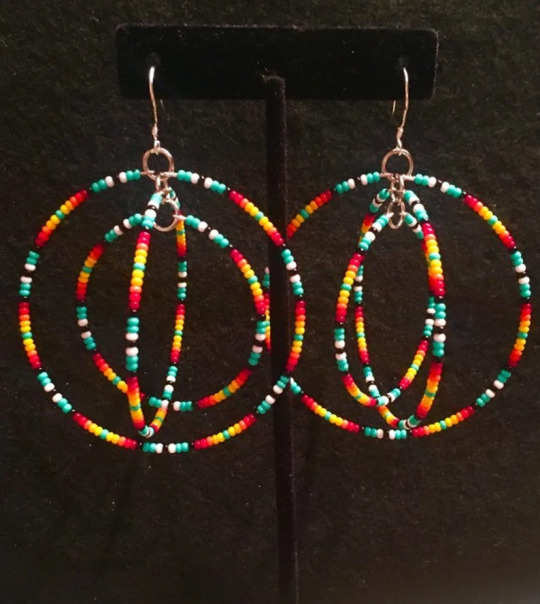
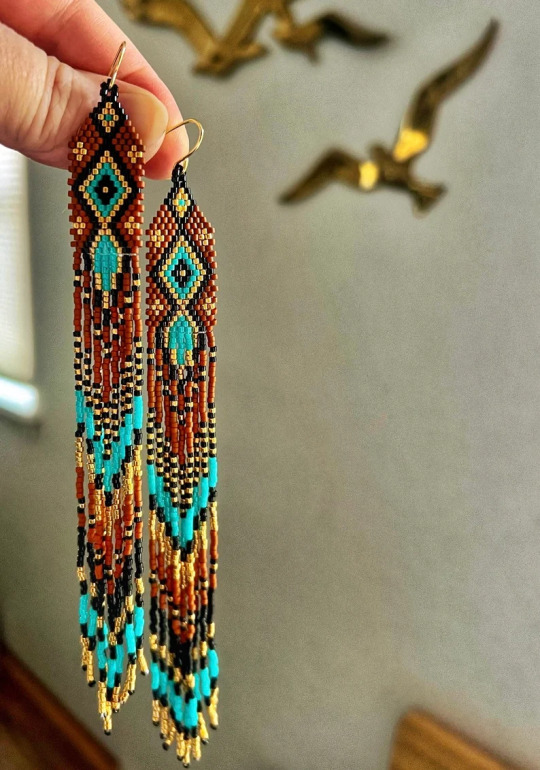
#indigenous people's day#art#native art#culture#food#indigenous#native american#native businesses#buy native#small business
6K notes
·
View notes
Text
Sarah Henn Hayward's trip to the Redwoods National Park in Klamath California was nothing less than spiritual.
She learned about the history and culture of the Yurok people, whose sacred land was stolen, and found herself wanting to fight for justice.
"No sector of our lives has been untouched by colonization, capitalism, abuse or corruption. From the environment to education, to healthcare, to safety in our communities, there is work to be done."
0 notes
Text
Cristen Hemingway Jaynes: Yurok Tribe Becomes First to Steward Land with National Park Service
Restoring Prairie Creek to ecological integrity is part of the plan for the 125-acre ‘O Rew Redwoods Gateway, which represents a first-ever model for tribal, federal, and state co-management of nationally significant land, with an Indigenous tribe at the helm. CalTrout / Michael Wier. California’s Yurok Tribe had 90 percent of its territory stolen during the mid-1800s gold rush. Now, it will be…
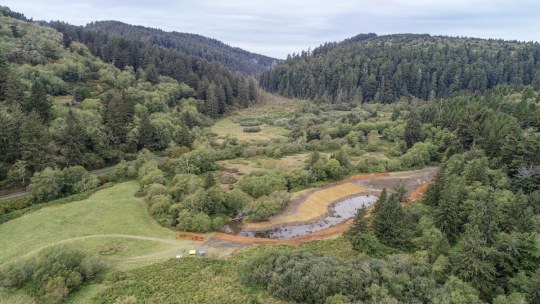
View On WordPress
#Cristen Hemingway Jaynes#National Park Service#Native American#Redwoods#restoration#wilding#Yurok#Yurok Tribe Becomes First to Steward Land with National Park Service
0 notes
Text
Preliminary planning started back in 2011, and in 2020, the reservoir action management plan, a detailed 260-page document was published by the Klamath River Renewal Corporation – the non-profit entity formed to manage the entire dam removal project. ''The document gave us our targets, and has kept us on track," says Joshua Chenoweth, senior ripariani ecologist for the tribe who was hired to manage the revegetation project. Between 2018 and 2021 seed collection crews – many of whom are tribal elders – were hired to harvest native seeds, by hand, in preparation for the dam removal. They collected 98 species and around 2,000lbs (900kg) of seeds. The seeds were then dispatched to specialised nurseries, which propagated them en masse, and sent the seedlings to storage facilities where they were kept until the time came for them to be planted.
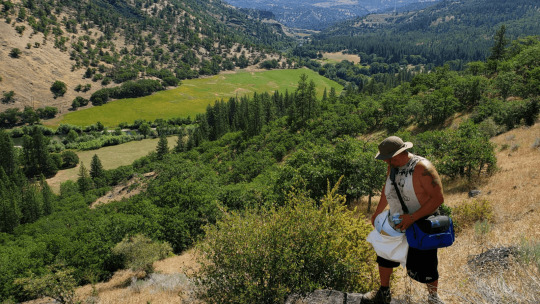
When it came to planting the seeds, Chenoweth has used a variety of methods, including seeding by helicopter alongside the old-fashioned way, by hand. Beginning straight after the first draining in late 2023, the team hand-sowed 500 acres of land, including 25,000 acorns. "It really is the most effective restoration tool. And the only reason we used a helicopter was when muddy conditions made it too dangerous for us to walk on the land." The results were "excellent", Chenoweth says. "Despite a hot and dry summer, where we've seeded is green, we're seeing flowering plants teeming with life. I counted eight different butterflies in the areas we hand-seeded. There's moths, hoverflies, bees, birds. It's been a really exciting first year." The team will continue to seed and plant the area for another two years, prioritising the tributaries important for salmon habitat. "The first year has definitely given me a lot of hope," Chenoweth, "but it'll probably get more challenging from here. Now we're completely at the mercy of Mother Nature."
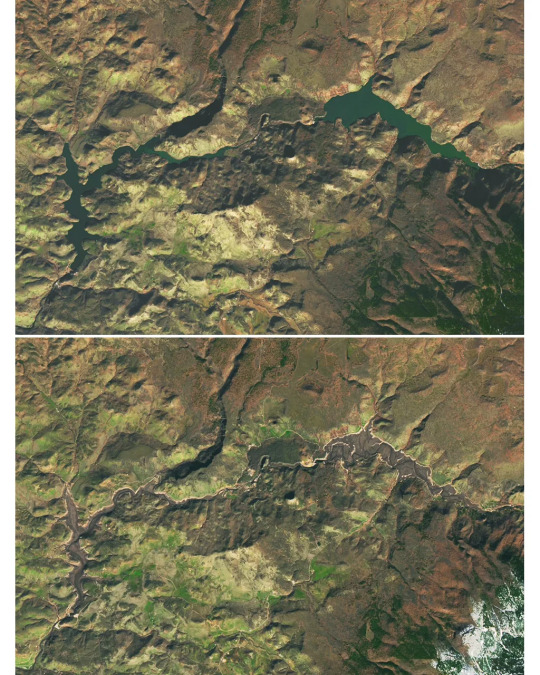
175 notes
·
View notes
Text
California’s Yurok Tribe, which had 90% of its territory taken from it during the Gold Rush of the mid-1800s, will be getting a slice of its land back to serve as a new gateway to Redwood National and State Parks visited by 1 million people a year. The Yurok will be the first Native people to manage tribal land with the National Park Service under a historic memorandum of understanding signed Tuesday by the tribe, Redwood National and State Parks and the nonprofit Save the Redwoods League. The agreement “starts the process of changing the narrative about how, by whom and for whom we steward natural lands,” Sam Hodder, president and CEO of Save the Redwoods League, said in a statement.
85 notes
·
View notes
Text

le.loveflow
life’s short. live #free. & a reminder that nudity isn’t inherently sexual. we came out of the womb this way and it’s only our society’s programming that has completely sexualized the human form. i choose to #rejoice in the body my soul lives in, during this incarnation. i encourage ya to do the same! 📍on native yurok land 📸 @spencerontheroad :p
98 notes
·
View notes
Text

Yurok tribal members lead a redwood canoe tour on the lower Klamath River on Tuesday, June 8, 2021, in Klamath, Calif. (AP Photo/Nathan Howard, File)
(I could have sworn I read this in a post on here, but I just cannot find it anywhere. So here it is... maybe again for some folks.)
California tribe that lost 90% of land during Gold Rush to get site to serve as gateway to redwoods
By Associated Press Laguna Beach
PUBLISHED 4:54 PM PT Mar. 19, 2024
Source.
California’s Yurok Tribe, which had 90% of its territory taken from it during the Gold Rush of the mid-1800s, will be getting a slice of its land back to serve as a new gateway to Redwood National and State Parks visited by 1 million people a year.
The tribe signed a memorandum of understanding Tuesday with California and the National Park Service for 125 acres in Humboldt County to be transferred to the Yurok in 2026 after the restoration of salmon habitat Officials say the tribe will be the first Native people to co-manage returned land with the National Park Service The arrangement with the Redwood National and State Parks and the nonprofit Save the Redwoods League is part of a growing Land Back movement It seeks to return Indigenous homelands to descendants of those who inhabited those areas long before European settlers arrived
The Yurok will be the first Native people to manage tribal land with the National Park Service under a historic memorandum of understanding signed Tuesday by the tribe, Redwood National and State Parks and the nonprofit Save the Redwoods League.
The agreement “starts the process of changing the narrative about how, by whom and for whom we steward natural lands,” Sam Hodder, president and CEO of Save the Redwoods League, said in a statement.
The tribe will take ownership in 2026 of 125 acres near the tiny Northern California community of Orick in Humboldt County after restoration of a local tributary, Prairie Creek, is complete under the deal. The site will introduce visitors to Yurok customs, culture and history, the tribe said.
The area is home to the world’s tallest treees — some reaching more than 350 feet. It’s about a mile from the Pacific coast and adjacent to the Redwood National and State Parks, which includes one national park and three California state parks totaling nearly 132,000 acres.
The return of the land — named ’O Rew in the Yurok Language — more than a century after it was stolen from California’s largest tribe is proof of the “sheer will and perseverance of the Yurok people,” said Rosie Clayburn, the tribe’s cultural resources director. “We kind of don’t give up.”
For the tribe, redwoods are considered living beings and traditionally only fallen trees have been used to build their homes and canoes.
More below the cut:

This drone photo taken Monday, Jan. 29, 2024, shows the site of a salmon restoration project at Prairie Creek, which runs from Redwood National and State Parks, Calif., and flows through land that will be returned to the Yurok Tribe. (AP Photo/Terry Chea, File)
“As the original stewards of this land, we look forward to working together with the Redwood National and State Parks to manage it,” Clayburn said. “This is work that we’ve always done, and continued to fight for, but I feel like the rest of world is catching up right now and starting to see that Native people know how to manage this land the best.”
The property is at the heart of the tribe’s ancestral land and was taken in the 1800s to exploit its old-growth redwoods and other natural resources, the tribe said. Save the Redwoods League bought the property in 2013 and began working with the tribe and others to restore it.
Much of the property was paved over by a lumber operation that worked there for 50 years and also buried Prairie Creek, where salmon would swim upstream from the Pacific to spawn.
A growing Land Back movement has been returning Indigenous homelands to the descendants of those who lived there for millennia before European settlers arrived. That has seen Native American tribes taking a greater role in restoring rivers and lands to how they were before they were expropriated.
Last week, a 2.2-acre parking lot was returned to the Ohlone people where they established the first human settlement beside San Francisco Bay 5,700 years ago. In 2022, more than 500 acres of redwood forest on the Lost Coast were returned to the InterTribal Sinkyone Wilderness Council, a group of 10 tribes.
The ’O Rew property represents just a tiny fraction of the more than 500,000 acres of the ancestral land of the Yurok, whose reservation straddles the lower 44 miles of the Klamath River. The Yurok tribe is also helping lead efforts in the largest dam removal project in U.S. history along the California-Oregon border to restore the Klamath and boost the salmon population.
Plans for ‘O Rew include a traditional Yurok village of redwood plank houses and a sweat house. There also will be a new visitor and cultural center displaying scores of sacred artefacts from deerskins to baskets that have been returned to the tribe from university and museum collections, Clayburn said.
The center, which will include information on the redwoods and forest restoration, also will serve as a hub for the tribe to carry out their traditions, she said.
It will add more than a mile of new trails, including a new segment of the California Coastal Trail, with interpretive exhibits. The trails will connect to many of the existing trails inside the parks, including to popular old-growth redwood groves.

This drone photo taken on Monday, Jan. 29, 2024, shows a salmon restoration project at Prairie Creek, which runs from Redwood National and State Parks, Calif., and flows through land that will be returned to the Yurok Tribe. (AP Photo/Terry Chea)
The tribe had already been restoring salmon habitat for three years on the property, building a meandering stream channel, two connected ponds and about 20 acres of floodplain while dismantling a defunct mill site. Crews also planted more than 50,000 native plants, including grass-like slough sedge, black cottonwood and coast redwood trees.
Salmon were once abundant in rivers and streams running through these redwood forests. But dams, logging, development and drought — due in part to climate change — have destroyed the waterways and threatened many of these species. Last year, recreational and commercial king salmon fishing seasons were closed along much of the West Coast due to near-record low numbers of the iconic fish returning to their spawning grounds.
Thousands of juvenile coho and chinook salmon and steelhead have already returned to Prairie Creek along with red-legged frogs, northwestern salamanders, waterfowl and other species.
Redwoods National Park Superintendent Steve Mietz praised the restoration of the area and its return to the tribe, saying it is “healing the land while healing the relationships among all the people who inhabit this magnificent forest.”
#redwoods#redwoods national park#yurok#yurok tribe#national parks#california#environmentalism#conservation#indigenous stories#some good news!#ids in alt
12 notes
·
View notes
Note
I know many of us have been following the Klamath Dam removal with great excitement, and this YouTube video is the one that made me cry about it. It's a documentary on the first six months of revegetation in the reservoirs and banks of the Klamath. The land is being stewarded by the Yurok tribe, who collaborated with a company called Resource Environmental Solutions to restore the landscape following the drawdown and removal of the dam.
The video gives me a profound feeling of hope. We are NOT doomed. We CAN repair the world.
Thank you for sending that!! I'm gonna watch it!!
We CAN repair the world!
188 notes
·
View notes
Text
3 notes
·
View notes
Text
Excerpt from this press release from the US Fish & Wildlife Service:
The U.S. Department of the Interior and U.S. Fish and Wildlife Service today announced nearly $46 million in investments from President Biden’s Bipartisan Infrastructure Law for ecosystem restoration activities that address high-priority Klamath Basin water-related challenges in southern Oregon and northern California.
In February, the Department announced a landmark agreement between the Klamath Tribes, Yurok Tribe, Karuk Tribe and Klamath Water Users Association to advance collaborative efforts to restore the Klamath Basin ecosystem and improve water supply reliability for Klamath Project agriculture. Funds announced today will support 24 restoration projects developed by signers of this agreement, as well as other Tribes and other conservation partners.
Through President Biden’s Investing in America agenda, the Department is implementing more than $2 billion in investments to restore the nation’s lands and waters. To guide these historic investments, and in support of the President’s America the Beautiful initiative,the Department unveiled the Restoration and Resilience Framework, to support coordination across agency programs and drive transformational outcomes, including a commitment to advance collaborative efforts to restore the Klamath Basin ecosystem and improve water supply reliability for Klamath Project agriculture through the Klamath Keystone Initiative. By working collaboratively with ranchers, state and local governments, Tribal nations, and other stakeholders, the Department is working to build ecological resilience in core habitats and make landscape-scale restoration investments across this important ecosystem.
Through the Bipartisan Infrastructure Law , the Service is investing a total of $162 million over five years to restore the Klamath region’s ecosystem and repair local economies. These investments will secure reliable water for the national wildlife refuges, advance the restoration of salmon post dam removal, address water quality and conveyance issues, and support co-developed restoration projects with Tribes, farmers and ranchers, and conservation partners.
As part of today’s investments, $13 million will be used to complete restoration of the Agency-Barnes wetland units of Upper Klamath National Wildlife Refuge and provide fish habitat access in Fourmile and Sevenmile creeks. Covering 14,356 acres, the restored wetland will create vital habitat for waterfowl, federally endangered Lost River and shortnose suckers, and other species, making it one of the largest wetland restoration initiatives in the United States.
4 notes
·
View notes
Text
The tribes, environmentalists and their allies celebrated the shrinking waters as an essential next step in what they say will be a decades-long process of restoring one of the West's largest salmon fisheries and a region the size of West Virginia back to health. Yurok tribal member and fisheries director Barry McCovey was amazed at how fast the river and the lands surrounding the Copco dam were revealed. "The river had already found its path and reclaimed its original riverbed, which is pretty amazing to see," he said. The 6,500-member tribe's lands span the Klamath's final 44 miles to the Pacific Ocean, and the Yurok and other tribes that depend on the Klamath for subsistence and cultural activities have long advocated for the dams' removal and for ecological restoration. Amid the largest-ever dam removal in the U.S., rumors and misunderstandings have spread through social media, in grange halls and in local establishments. In the meantime, public agencies and private firms race to correct misinformation by providing facts and real data on how the Klamath is recovering from what one official called "major heart surgery." But while dam removal continues, a coalition of tribes, upper Klamath Basin farmers, and the Biden administration have struck a new deal to restore the Klamath Basin and improve water supplies for birds, fish and farmers alike. ...
The Yurok Tribe also contracted with Resource Environmental Solutions to collect the billions of seeds from native plants needed to restore the denuded lands revealed when the waters subsided. The company, known to locals as RES, took a whole-ecological approach while planning the project. In addition to rehabbing about 2,200 acres of land exposed after the four shallow reservoirs finish draining, "we have obligations for a number of species, including eagles and Western pond turtles," said David Coffman, RES' Northern California and Southern Oregon director. ... The company also plans to support important pollinators like native bumblebees and monarch butterflies and protect species of special concern like the willow flycatcher. And, Coffman said, removal of invasive plant species like star thistle is also underway. In some cases, he said, workers will pull any invasives out by hand if they notice them encroaching on newly planted areas. ...
The Interior Department announced Wednesday that the agency had signed a deal with the Yurok, Karuk and Klamath Tribes and the Klamath Basin Water Users Association to collaborate on Klamath Basin restoration and improving water reliability for the Klamath Project, a federal irrigation and agricultural project. An Interior Department spokesperson said the agency had been meeting with river tribes and the farmers of the Upper Basin for the first time in a decade to develop a plan to restore basin health, support fish and wildlife in the region, and support agriculture in the Upper Basin. "We're trying to make it as healthy as possible and restore things like wetlands, natural stream channels and forested watershed," the spokesperson said. He likened it to keeping the "sponge" wetlands provide to store water wet. The effort is meant to be a cross-agency and cross-state process. The Biden administration also announced $72 million in funding for ecosystem restoration and agricultural infrastructure modernization throughout the Klamath Basin from the Bipartisan Infrastructure Act.
11 notes
·
View notes
Link
5 notes
·
View notes